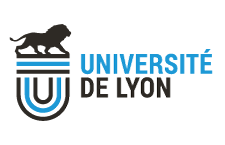WP-2
Emerging Imaging Techniques
Progressing in the early detection of age-related diseases and cancers is a major challenge requiring improvements in sensitivity and specificity of the current imaging techniques. Significant improvement can be expected by combining imaging modalities and by developing new physics-based contrast concepts associated to sophisticated data processing (to be developed in WP4).
The challenges are to investigate morphology and physiology, to examine soft or solid tissues, to follow static or dynamic mechanisms, to measure macroscopic or microscopic tissue properties over long or short timescales. No unique imaging modality can meet all these features and the future of medical imaging techniques for diagnosis and body exploration lies in the synergy of several imaging modalities pushed to their individual limits.
In this context, several leading groups develop dual modalities and advanced imaging or spectroscopy techniques applied in the ageing and cancer field.
PRIMES will bring together at the regional level, cutting-edge skills on various modalities. In WP2, these will be used for multimodality imaging, new instruments and imaging modalities through a high degree of innovation and high-risk projects which are centered on two main tasks: first, hybrid imaging; secondly, novel imaging techniques based on original multidimensional acquisition concepts in MR, US, optic and X-ray imaging.
PRIMES Thesis on WP2 themas:
VALLET Maëva (2012 - 2015) - Imagerie photoacoustique des tissus biologiques profonds (CREATIS - CEA-LETI) 50% Labex PRIMES - 50% Labex CeLya
DOREZ Hugo (2013 - 2016) - Imageries endoluminales multimodales IRM-optique et spectroscopie pour la caractérisation et la stadification des anomalies tissulaires colorectales (CREATIS)
WEBER Loriane (2013 - 2016) - Iterative tomographic X-ray phase reconstruction based on image simulation with VIP (CREATIS) 50% WP5
ALSTON Laure (2014 - 2017) - Imagerie optique et de fluorescence pour l’assistance peropératoire en neurochirurgie (CREATIS)
WP2 leaders
Olivier Beuf - Creatis
Hélène Ratiney - Creatis
Involved teams
- CREATIS
team 2: Carole Lartizien, Rémy Prost,
team 3: Elisabeth Brusseau, Philippe Delachartre, Valérie Detti, Hervé Liebgott,
team 4: Nicolas Ducros, Max Langer, Cécile Olivier, Françoise Peyrin, Marc Robini, Bruno Sixou,
team 5: Olivier Beuf, Sophie Cavassila, Patrick Girard, Denis Grenier, Bruno Montcel, Anne-Laure Perrier, Emmanuel Perrin, Hélène Ratiney, Raphaël Sablong, Kevin Tse Ve Koon,
team 6: Yves Berthezène, Norbert Nighoghossian, Dominique Sappey-Marinier, Marlène Wiart,
Service informatique: Pierre Ferrier,
Plateforme multimodale et logistique: Sophie Gaillard, Laurent Mahieu-Williame
- LHC
- CEA-LETI
LDET: Eric Gros d'Aillon, Guillaume Montemont, Loïk Verger
- CRNL
- Neurodis



 Welcome
Welcome PRES Lyon
PRES Lyon Contact us
Contact us Archives
Archives WebAdmin
WebAdmin